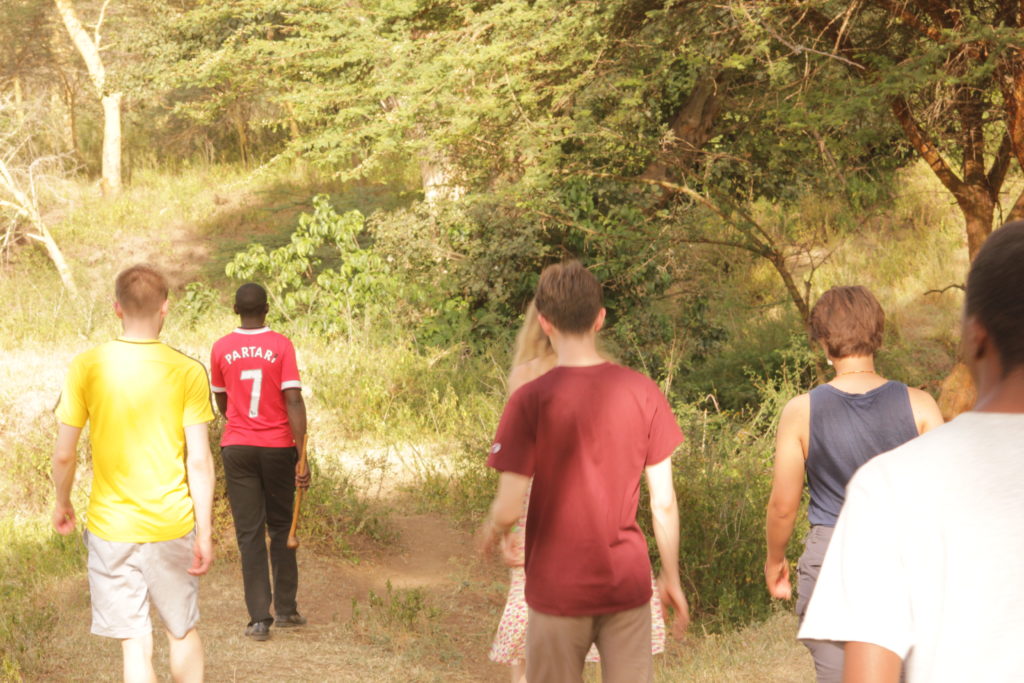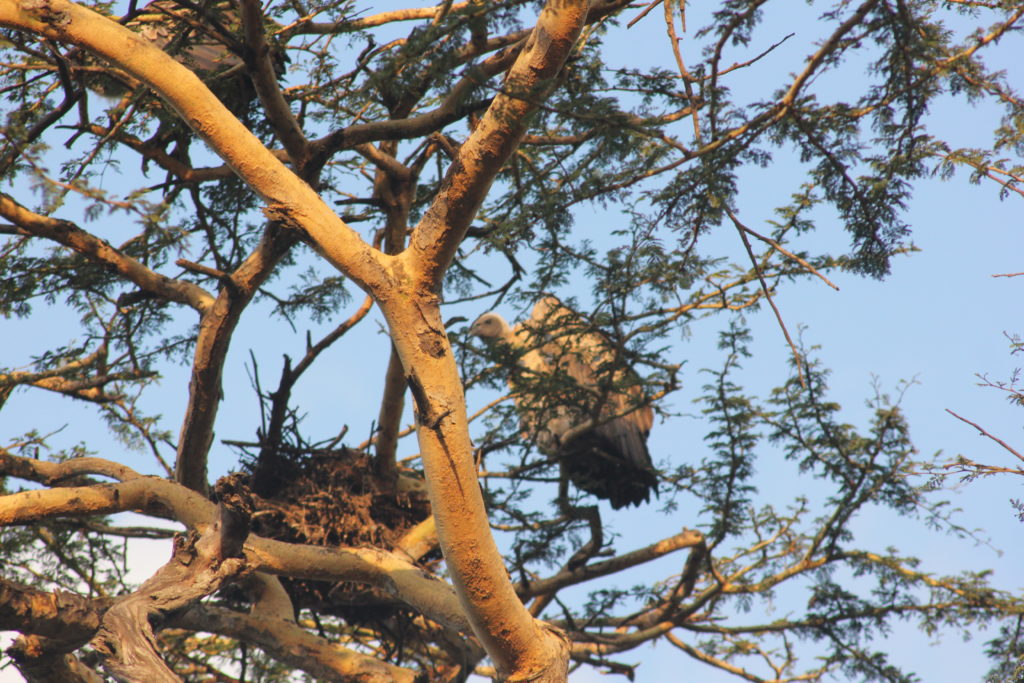We had something of a rocky start with our camera traps. On the morning of the wedding day, we made a foray out of the camp into the surrounding bushland, ready to get the cameras up and running so that we could start collecting data. It was a muggy day, and the air was thick with insects, as we trampled our way through the spiny acacia trees and kept our eyes peeled for any signs of wildlife activity. Solomon had come along to provide some local knowledge, helping us navigate through the forbidding sea of sharp shrubs and wielding his rungu in a manner that inspired great confidence, while Mandela was our source of ecological expertise. As we walked, he would identify birds that flitted past or squat down to sniff at the crumbling remnants of someone’s last meal and inform us that a hyena had recently passed through.

Nearing the riverbed where we hoped to install a few of the cameras, we suddenly became aware of many eyes furtively watching us through the trees. A large group of impala were weaving their way past, grunting and tossing their heads as they went. Noticeably, they were all males, each sporting an impressive set of twisted horns.
“That,” announced Mandela, “is a bachelor herd. You see, a dominant impala male will control a harem of maybe one hundred females, and he guards them so no other male can mate with them. When his sons get older, they start to become a bit cocky and kinky, and he tells them ‘I don’t like the way you’re looking at your mother’ – so he drives them out of the herd. Then these young males form their own bachelor herd, some related, some not, and they practice locking horns together. Eventually, they will choose one of the males in the herd to oust the dominant male of a harem, and if he wins then the new guy takes over.”
“What do all the others in the bachelor herd get out of it?” I wondered.
Mandela grinned wickedly. “While the big guy is busy fighting off his new rival, the other males can get busy doing other things behind his back.”

Mandela was full of colourful facts like this, and they helped to pass the time as we marched along under the withering sun. Once we had reached the river, we followed it along its length until we arrived at a point where the water was shallow and a number of tracks indicated that this was a popular crossing point. We secured one of the camera traps on a thick branch that overlooked the river, and continued on our way. Two more camera traps were positioned in other key locations, one at a fork in an important migratory path and the other at a second bank further along the river. From these points, we hoped to be able to record the activity of the wildlife in the area and identify the routes they took while moving in and out of the national park to graze, drink or hunt.
Unfortunately, the camera traps had other ideas. When we checked back a few days later, we were decidedly deflated to discover that somehow each of the three cameras had malfunctioned in a different way. We resolved not to let this deter us, and after some extensive tinkering we managed to fix the various problems that were plaguing them. Confident now that the camera traps were fully operational, though still a bit confused about how they had failed in the first place (all three were working when we first tested them, I should add), we set out again that evening for another try.
Our guide this time was John, a TWF employee who worked at the camp, and he impressed us all by tracking down a steaming pile of rhino dung. The sheer volume of it was monumental, putting Mandela’s hyena droppings to shame. John informed us that it was very fresh – as we followed the trail, the description shifted from “five minutes ago” to “a few minutes ago” to “just now.” He thought it was a pair of white rhinos, which slightly eased our nerves, as they are known to be less aggressive than the black rhinos which also occur in this area. In any event, we probably would have struggled to tell the difference if either kind was charging towards us, as both are a similar shade of dark grey and thus very unhelpfully named. The white rhino, in fact, owes its name to a mistranslation of the Afrikaans word ‘weit’, meaning wide and referring to the animal’s mouth (which is indeed wider than that of the black rhino, so the zoologists did get something right).
We moved one of our camera traps to the site of the rhino dung, hoping to catch the culprits in the act if they returned, while the other two we placed back in their original locations. Now that we knew the cameras were functioning properly, all that remained to do for the moment was wait, and return in due course to see what they had found.

On our way back to the camp, we spotted a mass of vultures and maribou storks circling overhead, their wide wings riding the updrafts as they looked for carcasses to steal. We wondered if this was a sign of a recent kill, and John confirmed that a local lion had reportedly killed an impala today. I glanced up at the airborne scavengers, and shivered slightly. There is something very disconcerting about seeing vultures above you, even if you know you’re not the one they’re interested in; it suddenly makes you feel as though you should make it very clear how healthy and alive you are, just in case.
I also thought about the lion as we walked back to the camp, possibly tucking into an impala at that very moment. The impalas seemed to be thinking about it too, and darted around skittishly on the periphery of our vision. As long as the impalas were calm, we were calm. Whenever they got spooked, we opted for a brisk walk.
Watch this space for updates on the progress of the camera traps – once we’ve gathered our data, we’ll report our findings, and include some of the juiciest photos for your viewing pleasure. Fingers crossed for some lions!
